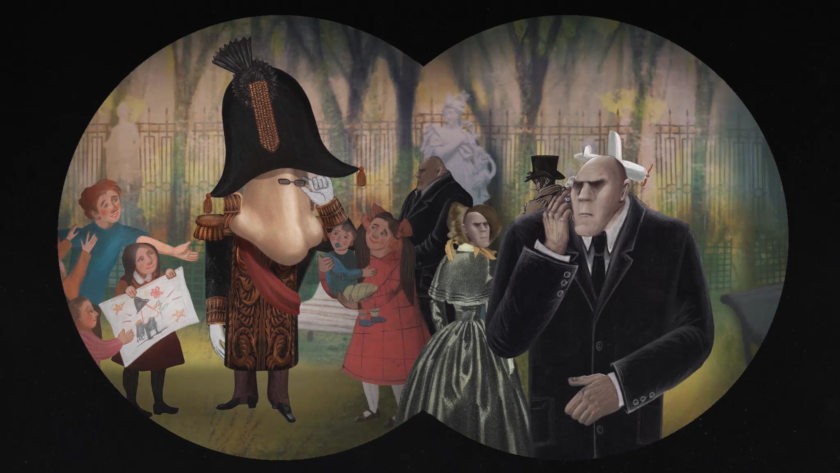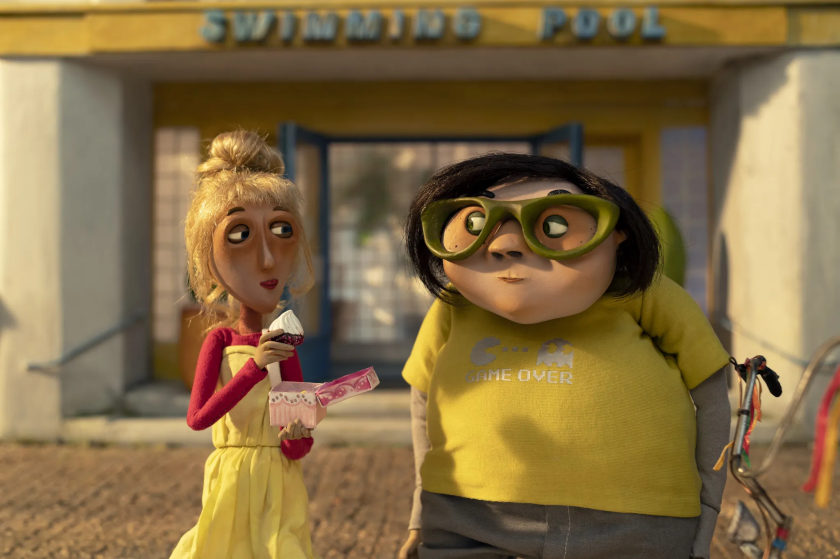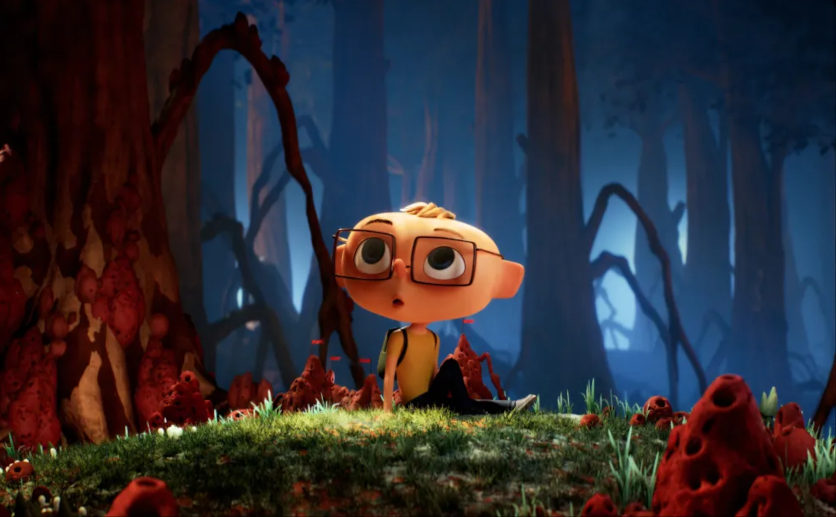The Nose or the Conspiracy of Mavericks by Andrey Khrzhanovsky

Master of Russian animation, Andrey Khrzhanovsky (b. 1939) came in 1964 to Soyuzmultfilm, where he made his debut film Once upon a time there lived Kozyavin(1964). His films include The Glass Harmonica (1968), Lion with a grey beard (1994).
The new animation feature film, The Nose or the Conspiracy of Mavericks is based on Gogol's The Nose short story.
Stalin's reign of terror in Russia during the first half of the 20th century. Described using a combination of historical settings, biographies and masterpieces from Russian avant-garde artists, composers and writers from this totalitarianism period - Synopsis
The film premiered at the 2020 International Film Festival Rotterdam, and it competes (official selection) at Annecy International Film Festival 2020.
Film Review: Vassilis Kroustallis
The Nose or the Conspiracy of Mavericks is a sprawling but carefully controlled artistic study on the role of the artist, the audience and (as always) the nature of the oppression itself. It circumscribes the times and the rise of the Russian Avant-garde scene, the Soviet Regime up to the Stalinist purges of intellectuals; it also feels like a cut-out, necessarily fragmented history of the artists who never really lived to enjoy their own fame -no wonder a big part of the film is in cut-outs, which impose a stylized, sometimes exuberant but also restrained movement.
This intro would make Russian veteran's Andrey Khrzhanovsky opus a very sad film; it isn't. It is filled with sly dialogue exchanges, it features a visual spectacle, and most of all, it is an open horizon to a whole Russian and global culture of the early 20th century. Here is a film where Shostakovich, Bulgakov, Meyerhold and Gogol vie for attention -and, most of the times, they get it in equal parts.
The film kicks off in an airplane and a live-action sequence, with its passengers watching different films in their screens (one of them is Harry Potter, of course). We clearly learn that the purpose of the film is to have all passengers watch the same film. Khrzhanovsky's solution is to put everything into a single basket -and, amazingly, it works.
The film's editing technique is to frame us in a journey of 3 animated, single dreams: the first features an enactment of Gogol's The Nose short story; a guy loses his nose, which becomes a separate character itself and an oppressing one; all of the above are tuned to the music of Shostakovich's eponymous 1928 opera. The second moves to Stalin's regime; the celebrated playwright Bulgakov dared to write a letter to Stalin, in order to complain of his neglect from the Soviet Russian scene; the whole thing is here contextualized. The third segment takes its inspiration (again) from Shostakovich, and the harsh reaction he experienced from the Pravda Soviet newspaper, when his opera Lady Macbeth of the Mtsensk District premiered in 1936. Formalism vs. realism ("muddle instead of music") has an easy answer in the Socialist realist art tendency.
All these is good and rewarding if you get a grasp of the rich cultural inferences underneath; on the other hand, the film gets its power from its always evolving staging sequence. Its narrative structure permits overlapping (but not chaotic) levels of information to be presented, in a film-within-a-film sequence: the audience for one scene is the protagonist for the other. And Khrzhanovsky and his editors know how to use the Eisensteinian montage of attractions; the crosscutting between animation, live-action scenes, documentary footage, enriches the experience, always trying for the meaning in combination.
A film as rich in information is indeed rich in its background aesthetic -its bigger part takes place inside a theater and a stage, anyway. 2D animation is also used, as well as animators themselves designing their scene. This evocative notion of art paraded in front of your eyes (at least in the first dream) is the best argument against what is being attempted in the other two, namely an institutional attempt to suffocate art.
Apart from a fleeting presence of Vladimir Putin, we don't get much info on present-day Russian cultural politics; the film's third segment overplays its message, even though the names calling of so many artists persecuted during the Stalinist purges (Olga Bergholz, Alexander Vvedensky, Nikolai Gumilyov) leave a bitter feeling to the audience. But the film plays well with our modern means of surveillance, the computer/mobile screens. They are silent, but everywhere.
The Nose or the Conspiracy of Mavericks makes a plea for the artist in each one of us as rare gift to be defended from its oppressors; it portrays a meticulously constructed character stage, it uses music to its advantage, and works best as 'total art' output -not downright experimental, and without the need to be radical. It is mostly atonal, and in a welcoming way.
Vassilis Kroustallis
CREDITS
The Nose Or The Conspiracy of Mavericks, 2020
Director Andrey Khrzhanovsky Script Yury Arabov, Andrey Khrzhanovsky | Art-director Marina Azizyan, Alexandra Pavlova, Alexander Khramtsov, VaryaYakovleva | Producer Andrey Khrzhanovsky | Technique drawing, cut-outs, live-action, documentary
Production: Shar Studio









